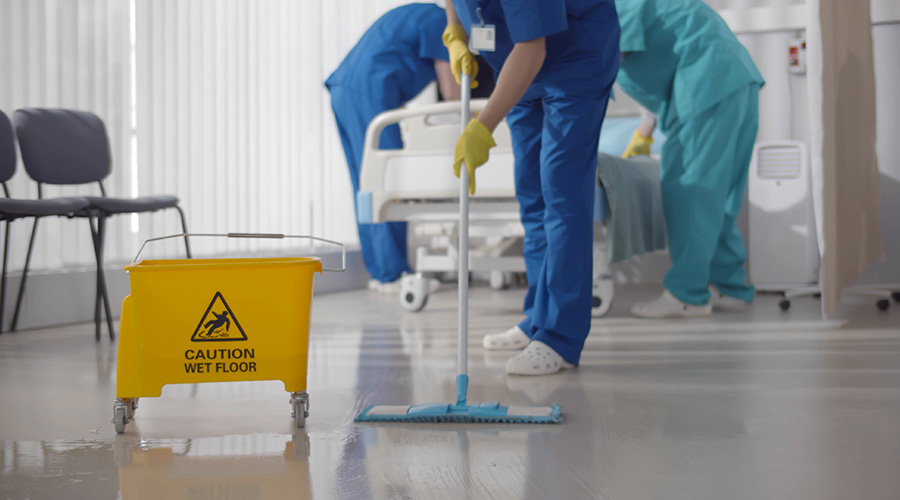Improving nurse wellness in the design of the healthcare built environment was the focus of a recent gathering of members of the Nursing Institute for Healthcare Design (NIHD) at the Lancaster, Pa., headquarters of Ecore, a leading producer of flooring performance surfaces.
“The average age of today’s nurse is 50 years old and many walk more than eight miles a day, work 10 to 12 hour shifts and experience other physically demanding aspects of their job,” said Mark Huxta, Ecore director of healthcare sales. “It is vital for hospitals and other healthcare facilities to focus on and enhance the ergonomic conditions of their staff’s environment to improve productivity, wellbeing and retention.”
The physical and emotional health of the nurse has a direct impact on the quality of care delivered. According to the Bureau of Labor Statistics (BLS), injuries among healthcare workers rank among the highest by industry.
Musculoskeletal disorders account for one-third of all occupational injuries reported to employers, while back, leg and foot fatigue follow closely behind. It’s a main reason why designers, facility managers and healthcare administrators are paying more attention to create environments that support the healthcare workforce.
“Improved seating, better work tools and new technology all contribute to a more ergonomically-friendly healthcare space,” said Joyce Durham, president of NIHD. “The not so obvious contributor to the wellness of a nurse is the floor. Many nurses are unaware that flooring selection in the healthcare setting can influence their well-being.”
As a result, designers, architects and specifiers are paying more attention to ergonomic materials in the healthcare setting including how a floor – the foundation of the healthcare environment design – can contribute to nurse comfort and health.
“Unfortunately, in healthcare, flooring is often specified last in the design process and ergonomic flooring with safety and acoustic features is far too often ‘value engineered out’ of the selection due to cost,” said Kay Rademacher, president elect of NIHD. “Ergonomic flooring should not be a last minute consideration. When healthcare staff have a better quality of life at work it impacts the quality of care they provide, which in turn can contribute meaningful improvements to patient care and overall satisfaction rates.”
According to Durham, flooring selections have historically been based on durability, maintenance, mobility for moving equipment, and cost. However, finding the optimal balance between force reduction and energy restitution – the storing and returning of energy – should also be considered.
“Specifying a floor that is more ergonomic can help to diminish chronic pain and boost productivity and patient quality of care, reduce absenteeism and workman comp claims, and lead to an overall improvement in quality of life for dedicated healthcare providers,” added Huxta.
According to Huxta, additional studies are now underway, including a Pebble Project focused on how flooring may reduce the risk of injury from patient falls, a concern that has both personal and financial ramifications for the patient and provider.
To learn more, visit www.ecoreintl.com.
 Building Sustainable Healthcare for an Aging Population
Building Sustainable Healthcare for an Aging Population Froedtert ThedaCare Announces Opening of ThedaCare Medical Center-Oshkosh
Froedtert ThedaCare Announces Opening of ThedaCare Medical Center-Oshkosh Touchmark Acquires The Hacienda at Georgetown Senior Living Facility
Touchmark Acquires The Hacienda at Georgetown Senior Living Facility Contaminants Under Foot: A Closer Look at Patient Room Floors
Contaminants Under Foot: A Closer Look at Patient Room Floors Power Outages Largely Driven by Extreme Weather Events
Power Outages Largely Driven by Extreme Weather Events